Syn.: Arachnites apiferus (Huds.) Hoffm., Ophrys insectifera var. andrachnites L., Ophrys chlorantha Hegetschw. et Heer, Orchis apifera (Huds.) Salisb.
Family: Orchidaceae Juss.
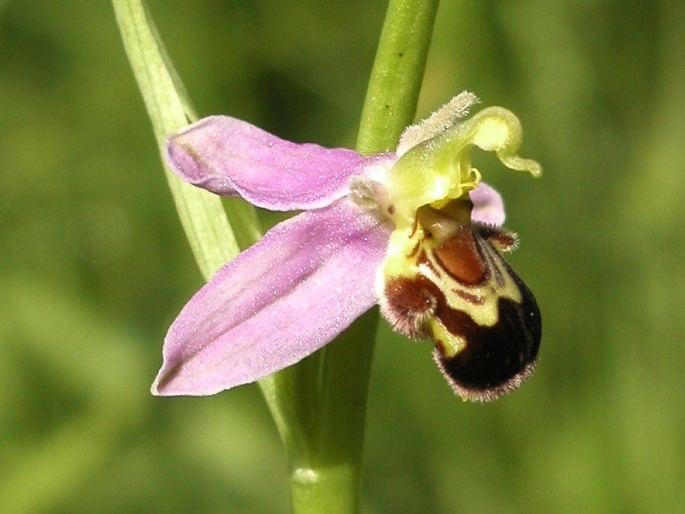
Distribution: Mediterranean region, and southern part of central and eastern Europe – from southern Europe to Crimea and Caucasus, northward from Britain and Benelux to Czechia.
Ecology: It grows in grasslands, on sunny meadows, slopes and pastures, from lowlands to foothills. Blooms from May to July.
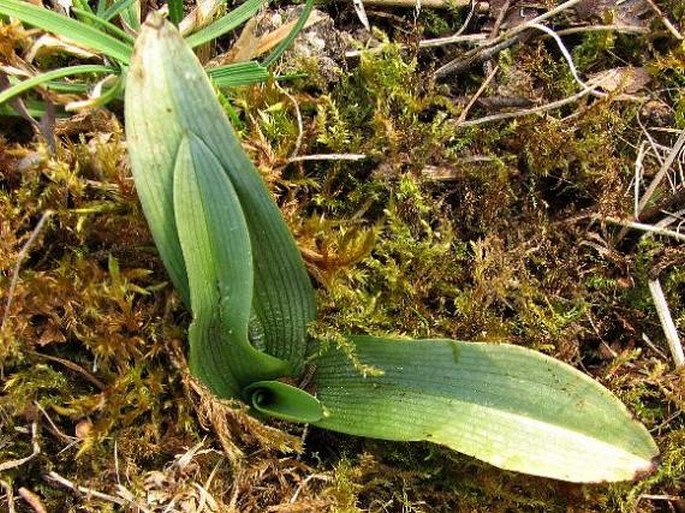
Description: A perennial herb with an erect stem, 20–40 cm tall. The basal leaves in a rosette, ovate to lanceolate, obtuse, two cauline leaves are alternate, elliptical, acute. Inflorescence 2–8-flowered; outer perianth-segments (8–)10–15 mm, oblong-ovate, purplish or purplish-violet, rarely whitish, green-striate; inner triangular to linear-lanceolate, green or purplish; labellum 10–13 mm, broadly ovate, brownish- or blackish-purple, rarely yellowish-green or bicolorous. The fruit is a capsule.
Threat and protection: The Bee Orchid is a protected plant in Ireland, Czechia, Slovakia, Ukraine, Hungary, Serbia and Russia, also is protected by the Convention on International Trade in Endangered Species of Wild Fauna and Flora (CITES).
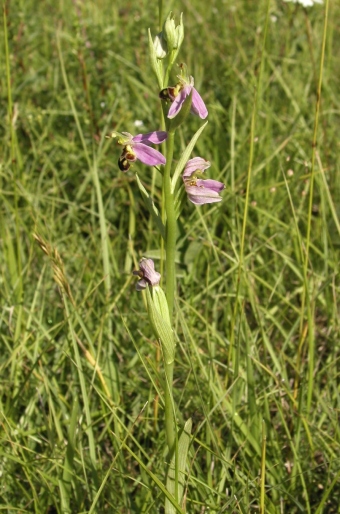
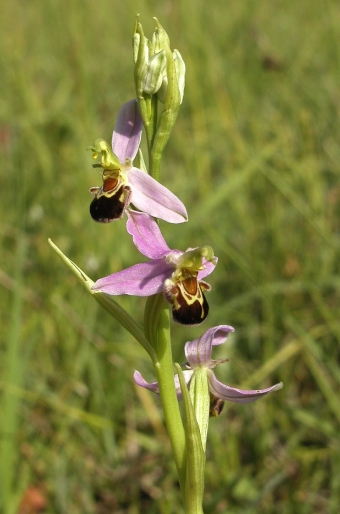
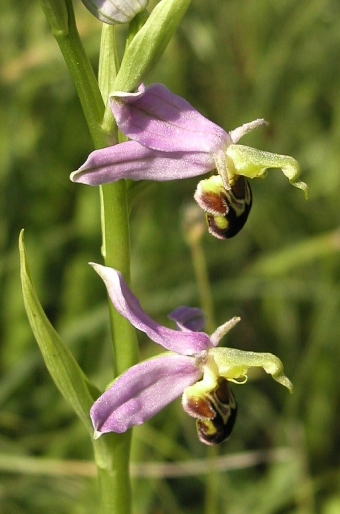

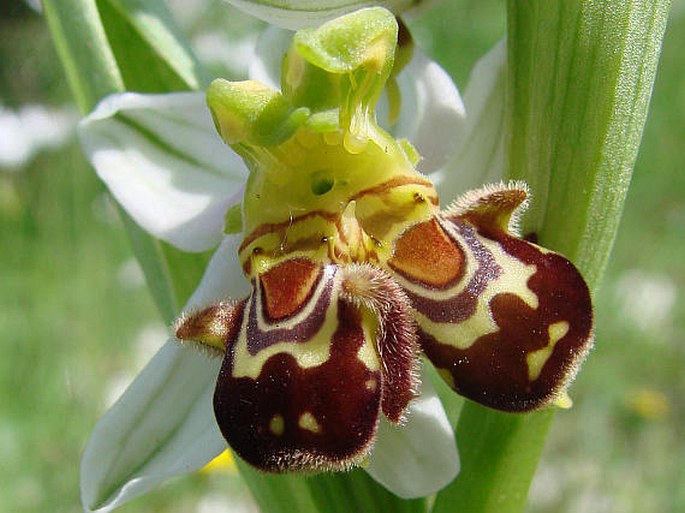
These images were taken in Czechia, Bílé Karpaty, Drahy (by Zdeněk Podešva, June 15, and July 5, 2002) and in Italy, Gargano, Vieste (by Ladislav Hoskovec, spring 2008).


